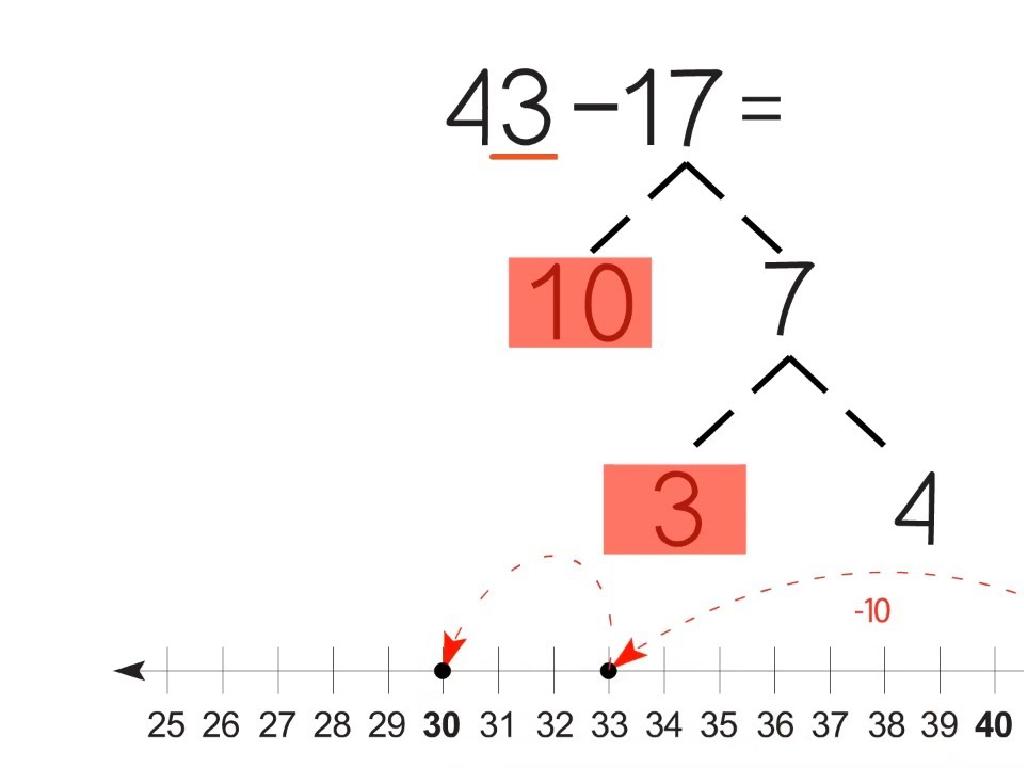Identify Earth'S Land Features Using Photographs
Subject: Science
Grade: Fourth grade
Topic: Earth'S Features
Please LOG IN to download the presentation. Access is available to registered users only.
View More Content
Today’s Adventure: Identifying Earth’s Land Features!
– Explore Earth’s varied surface
– Types of land features
– Mountains, valleys, plains, and plateaus
– Significance of land features
– They shape ecosystems and human activities
– Observing features in photographs
– Use photos to recognize and name features
|
This slide introduces students to the diverse land features found on Earth’s surface. Begin by discussing the various types of land features such as mountains, valleys, plains, and plateaus. Explain how these features are important as they support different ecosystems and influence human activities like agriculture and settlement. Emphasize the role of land features in the Earth’s geography and their significance in our daily lives. Encourage students to observe photographs of these features to enhance their ability to recognize and name them. This visual approach will help students connect textbook knowledge with real-world examples, fostering a deeper understanding of Earth’s geography.
Exploring Earth’s Land Features
– What are land features?
– Natural formations on Earth’s surface
– Types of land features
– Mountains, valleys, plains, deserts, plateaus
– Formation of land features
– Created by processes like erosion, volcanic activity
– Observing features in photos
|
This slide introduces students to the concept of land features, which are natural formations found on the surface of the Earth. Begin by defining land features and then discuss various types such as mountains, valleys, plains, deserts, and plateaus. Explain that these features are formed by different natural processes, including erosion, volcanic activity, and tectonic movements. Use photographs to help students identify and understand these features visually. Encourage students to think about the land features near where they live or places they may have visited. The goal is to help students recognize and name these features in the real world and understand the natural processes that create them.
Exploring Earth’s Land Features
– Observe land features in photos
– Look at the shape, size, and color in the pictures
– Identify characteristics of landforms
– Mountains have peaks, valleys are low areas
– Discuss observations from each photo
– Share what’s unique or interesting in the images
– Recognize diverse land features
|
This slide is aimed at helping students learn to identify and describe different land features of Earth using photographs. Encourage the students to observe the details in the photographs such as the shape, size, and color of the land features. Discuss the characteristics that define each type of landform, for example, mountains have peaks while valleys are areas that are lower in elevation. Have an interactive session where students can discuss their observations and what they find unique or interesting about each photograph. This will help them to recognize the diversity of land features on our planet. Provide a variety of photographs that include mountains, valleys, plains, and plateaus to give students a broad perspective of Earth’s topography.
Exploring Mountains: Earth’s Majestic Land Features
– Defining characteristics of mountains
– High elevation, steep slopes, and significant natural beauty
– Mountains’ impact on climate
– Higher elevations can lead to cooler temperatures and more precipitation
– Recognizing famous mountains
– Examples: Mount Everest, Rocky Mountains, and Mount Fuji
– Understanding mountains’ global significance
|
This slide introduces students to the concept of mountains as a significant type of Earth’s land features. Start by discussing the defining characteristics of mountains, such as their elevation, steepness, and how they are often seen as places of natural beauty. Explain how mountains can affect local and global climate patterns, including temperature changes and precipitation levels. Show photographs of famous mountains like Mount Everest, the Rockies, and Mount Fuji to help students identify them. Emphasize the importance of mountains to the world’s ecosystems, cultures, and geography. Encourage students to think about how mountains influence the environment and human activities.
Exploring Valleys and Plains
– Valleys vs. Plains
– Valleys are low areas between hills, while plains are large, flat lands.
– Water’s role in valley formation
– Rivers carve out valleys over time through erosion.
– Plains: Agriculture’s foundation
– Plains provide fertile land for growing crops.
– Comparing land features
|
This slide aims to help students distinguish between valleys and plains, two common land features on Earth. Begin by defining each term: valleys are typically characterized by their low-lying nature between mountains or hills, often with a river running through them, while plains are expansive flat areas that can stretch for miles. Discuss how water plays a crucial role in the formation of valleys through the process of erosion. Highlight how plains are often utilized in agriculture due to their flat terrain and fertile soil, making them ideal for farming. Use photographs to visually compare and contrast these features, and encourage students to think about how these landforms affect human activity and the environment.
Deserts and Plateaus: Earth’s Land Features
– Defining a desert
– Deserts are dry areas with less than 25 cm of rain yearly.
– Desert ecosystems
– Despite harsh conditions, plants and animals like cacti and camels thrive.
– What is a plateau?
– Plateaus are elevated flat areas higher than the surrounding land.
– Characteristics of plateaus
– They’re known for their flat tops and steep sides, like the Colorado Plateau.
|
This slide aims to introduce students to the unique characteristics of deserts and plateaus. Begin by explaining that deserts are not just hot and sandy, but defined by their lack of precipitation. Discuss the adaptations of desert flora and fauna that allow them to survive in extreme conditions. Transition to plateaus by describing their elevation and flatness. Use photographs to illustrate these land features, and encourage students to think about how these landscapes might look and feel. Ask them to imagine the challenges of living in these environments and how these land features are formed. This will set the stage for further exploration of Earth’s diverse topography.
Class Activity: Create Your Own Land Feature
– Gather materials: clay, paint, cardboard, markers
– Follow instructions to mold a land feature
– Shape the clay to form mountains, valleys, or other features
– Paint and label your land feature model
– Use paint for realism and markers to label parts
– Present and describe your creation
|
This hands-on activity is designed to help students identify and understand Earth’s land features through a creative process. Provide each student with clay, paint, cardboard, and markers. Guide them through the process of molding the clay into a miniature version of a land feature such as a mountain, valley, plateau, or canyon. Once the model is shaped, students can paint their creation to make it look more realistic and use markers to label different parts of their land feature. Encourage creativity and ensure they understand the characteristics of the feature they are modeling. After completing their models, each student will present their land feature to the class and describe its characteristics, such as elevation, slope, and how it might have been formed. This activity not only reinforces the lesson but also allows for artistic expression and public speaking practice.
Review and Reflection: Earth’s Land Features
– Recap major land features
– Share your favorite landform
– Did you like mountains, valleys, or something else?
– Discuss how landforms affect life
– Think about how rivers or mountains impact where people live and work.
– Engage in Q&A session
|
This slide aims to consolidate the students’ knowledge of Earth’s land features. Begin with a brief recap of the major landforms covered in previous lessons, such as mountains, valleys, rivers, and plains. Encourage students to share their favorite landform and discuss why they find it interesting. This can include personal experiences or facts they’ve learned. Then, guide a conversation on how different landforms can influence human activities and settlements. Finally, open the floor for a Q&A session, allowing students to ask questions or clarify any uncertainties they may have. This interactive session will help reinforce their understanding and ensure they are comfortable with the material.
Homework: Exploring Land Features
– Complete the Matching Worksheet
– Match land features with their characteristics on the worksheet
– Find a photo of a local land feature
– Take a picture or find one online of a land feature near you
– Write a description of the feature
– Describe what the feature looks like and guess how it formed
– Share your findings in class
|
This homework assignment is designed to reinforce the lesson on Earth’s land features. Students are tasked with completing a worksheet that will help them match specific land features with their characteristics, promoting active engagement with the material. Additionally, they are encouraged to find a photograph of a local land feature, which could be a hill, valley, river, or any notable geological formation in their area. They should write a short paragraph describing the physical appearance of the land feature, its location, and any other interesting details. This activity will help students apply their knowledge in a real-world context and enhance their observational skills. In the next class, students will have the opportunity to share their findings and discuss the diverse land features found by their classmates.






